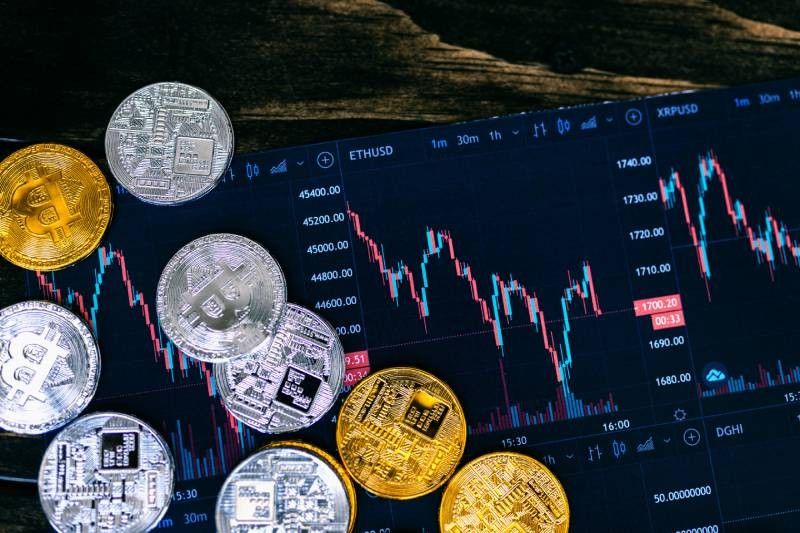Blockchain Industry Use Cases Series Episode 1: Simple asset movement

In an era where technology is reshaping industries and driving innovation, blockchain stands at the forefront as a transformative force.
I am thrilled to introduce the Blockchain Use Case Series in Philstar.com. This series will delve into the real-world applications of blockchain technology, demystifying its complexities and showcasing its potential.
From finance to healthcare, supply chain to governance, we will explore how blockchain is not just a buzzword but a tool that can revolutionize the way we conduct business and manage information. Join me as we embark on a journey to understand the practicalities, challenges, and triumphs of blockchain implementation. Whether you're a tech enthusiast, a business leader, or simply curious about the future, this series promises to enlighten and inspire.
Simple Asset Movement: Blockchain Beyond Crypto and NFTs
When we hear the word "blockchain," our minds often jump to cryptocurrencies like Bitcoin or the latest buzz in digital art, Non-Fungible Tokens (NFTs). But did you know that blockchain's applications extend far beyond these realms? One of the most fundamental and impactful use cases of blockchain is in tracking the movement of assets, both physical and digital. Let's dive into this fascinating world.
What is Asset Movement?
Asset movement refers to the transfer or relocation of assets from one place to another, one owner to another, or even one form to another. These assets can be anything from a shipment of goods to a digital file. Tracking these movements accurately is crucial for businesses, governments, and individuals alike.
Why Blockchain?
Blockchain technology offers a transparent, secure, and immutable ledger that records transactions. Unlike traditional databases, once a record is added to a blockchain, it cannot be altered. This makes it an ideal tool for tracking assets.
Here's how it works:
- Transparency: Every party involved in the asset's movement can view the entire history of that asset on the blockchain. This eliminates disputes and enhances trust.
- Security: The decentralized nature of blockchain means that no single entity controls the data. This makes it highly resistant to fraud or manipulation.
- Efficiency: Automated smart contracts can execute actions based on predefined rules, speeding up processes and reducing human error.
A Real-World Example: Tracking a Shipment
Imagine you're a manufacturer shipping goods across the globe. With blockchain:
- You can see exactly where the shipment is at any given moment.
- The recipient can verify the shipment's authenticity and history.
- Customs officials can quickly access all necessary documentation.
- If any issues arise, they can be identified and resolved quickly.
All these interactions are recorded on the blockchain, providing a transparent and unchangeable history.
Beyond Physical Goods
But it's not just physical goods that can benefit from blockchain tracking. Digital assets like software licenses, intellectual property, or even personal data can be managed and tracked using blockchain. This opens up new possibilities for industries like entertainment, healthcare, and finance.
Conclusion: A Tool for the Future
Blockchain's application in simple asset movement demonstrates that this technology is not confined to the realms of crypto or NFTs. It's a versatile and powerful tool that can revolutionize the way we track and manage assets.
As we continue to explore the potential of blockchain, we must recognize its broader applications and embrace its ability to bring transparency, security, and efficiency to our everyday lives. The future is here, and blockchain is leading the way.
Coming Next: Unraveling the Supply Chain with Blockchain
In our next exciting installment, we'll venture into the intricate world of supply chains, where products journey from raw materials to your doorstep. But what ensures that this journey is smooth, transparent, and efficient? The answer lies in blockchain.
Join us as we explore how blockchain is revolutionizing the supply chain, making it more resilient, traceable, and responsive. Whether it's tracking a coffee bean's journey from farm to cup or ensuring that a critical medical supply reaches its destination intact, blockchain is transforming the way we think about and manage supply chains.
Stay tuned for an eye-opening exploration that will take you behind the scenes of the products you use every day. The future of supply chain management is here, and it's powered by blockchain.
--
Paul Soliman is the founder and CEO of Hacktiv Colab Inc., a provider of end-to-end business applications. He is also a co-founder of BayaniChain, a blockchain-based ecosystem.
Quick Tech is a monthly newsletter on LinkedIn about web3, AI, Power Platform, Citizen Development, Quantum and the FUTURE. Subscribe to Paul's newsletter HERE.
- Latest






















